Customer retention strategies: 5 best practices & 6 strategies for low churn
Customer retention is the biggest opportunity – and the biggest challenge – facing businesses today.
While many companies focus on acquiring shiny new logos, acquisition is only one small piece of the puzzle. If you consistently acquire new customers but they only stick around for a month or two, you won’t build a sustainable long-term business (or good word of mouth for your brand) – no matter how low the customer acquisition cost is, you’re in leaky bucket territory.
To lower the burden of acquisition, you need to increase customer loyalty; and the first step to happy, brand-loyal customers is retention. Improving customer retention is especially crucial in times of economic uncertainty, when it’s increasingly important to build a resilient business with a reliable revenue stream.
But how do you retain customers? The key is engaging them at the right time, in the right place, and with the right message. Using clever targeting to ensure you reach the right people, and multichannel, integrated campaigns to help drive the right action when and where it’s most effective, you can create retention campaigns that keep your customers engaged and happy.
Read on to learn more about customer retention: what it is, why it matters, and our key strategies and best practices for customer retention.
What is customer retention?
Customer retention is the rate at which your business can keep its paying customers over a given period of time. Customer retention is important to any company because it measures not only how successful they are at acquiring new customers, but how successful they are at satisfying existing customers. This makes it a crucial metric to measure no matter what stage of growth your business is in.
Why a customer retention strategy is important
Most people think retention is so crucial simply because it means you lose fewer users than you otherwise would. But a sound retention strategy is actually one of your most powerful levers to grow your business by creating loyal customers and building valuable customer relationships.
“Retention can be more than twice as powerful as customer acquisition”
A study by Price Intelligently showed that a 1% increase in customer acquisition affects your bottom line by just over 3%. But improving your retention by lowering your gross churn by 1% extends customer lifetime value and increases your bottom line by around 7%. That’s right: retention can be more than twice as powerful as customer acquisition.
Not only that, but those current customers spend 67% more on average than new ones. They’re also more likely to refer you to other customers, which is one of the most effective ways of generating leads. Research shows that referral leads convert 3-5x more than leads from other marketing channels, have a 16% higher lifetime value, and go on to have a 37% higher retention rate, making them even more valuable.
“By reaching customers with the right message, at the right time, and in the right place, you can improve customer satisfaction and increase the likelihood of that user sticking around”
One retention tactic that works particularly well is lifecycle messaging. Lifecycle messaging involves contacting users with contextual, personalized messages that provide value based on their actual experience of using (or not using) your software. These messages are targeted and delivered across multiple channels, often as part of an orchestrated multichannel campaign.
This means you can reach them where they’re most likely to take action, whether that’s inside your app or product or out. By engaging customers with the right message, at the right time, and in the right place, you can improve customer satisfaction and increase the likelihood of that user sticking around.
Best of all, to create these message schedules you don’t need a “retention hacker”. All you need for a lightweight but effective customer retention program is a few hours to create a simple campaign of messages that will pay back many times over – and instill a culture of retention marketing into all aspects of your business. Building these customer relationships from day one, and optimizing the ideal experience, is the key to improving retention rates.
How to understand customer retention
The key to a good retention strategy is spotting the symptoms of churn early with your existing customers. You’ll know you’re losing a customer when you see a gradual decline in customer engagement. It’s important you act during this window, because once a user is gone, it’s very difficult to get them (and the corresponding lifetime value) back.
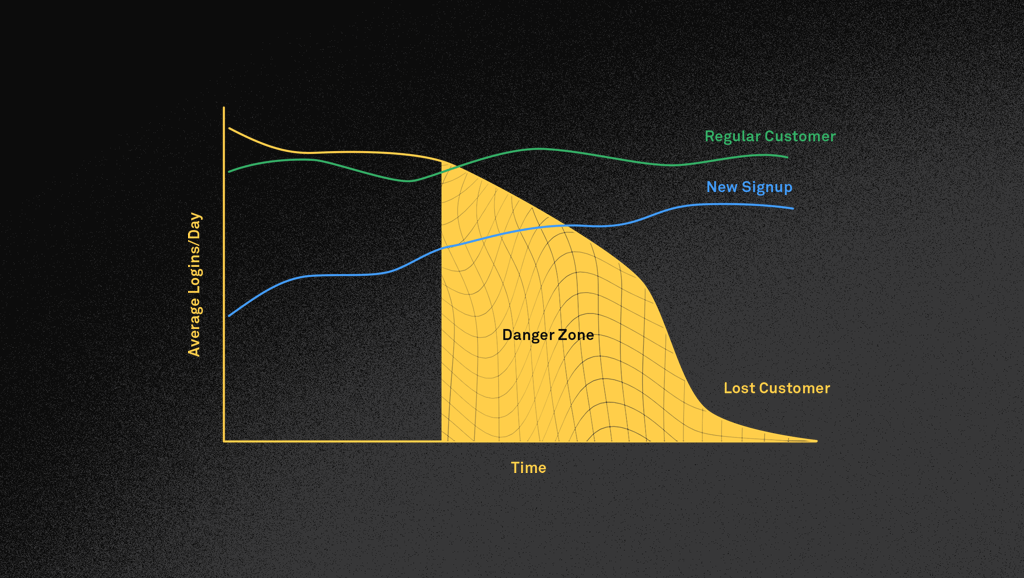
6 best customer retention strategies
Instead of thinking about loyalty efforts as a siloed retention program, we recommend embedding a culture of retention into your company. By prioritizing customer engagement at every stage of the customer journey, every interaction becomes an opportunity to build long-lasting customer relationships – which lead to long-lasting customers. In this way, your customer-facing teams are empowered to make a real impact on your customer retention, and can also help to spot and reduce churn before it happens.
With that underlying principle in mind, you can try one (or more) of the following strategies to improve customer retention rate – starting today.
1. Defend against churn by reducing time to value
The seeds of churn are planted the moment you acquire a customer. Even after initial onboarding, everything about your product is still unfamiliar, and you shouldn’t expect a new customer to figure it out on their own. This is why creating a great customer experience is important from day one. By reducing time to value and helping customers find their “aha!” moments ASAP, you can help them to instantly see the return on investment of your product or service – meaning they’re more likely to feel the impact and stick around.
“Many people will gravitate toward the one or two features of your product that resonate with them the most, but don’t explore other features. That means they’re missing out on some of the best parts of your product”
For example, many people will gravitate toward the one or two features of your product that resonate with them the most, but don’t explore other features. That means they’re missing out on some of the best parts of your product. Those first-time buyers need to see value from the first steps of the customer journey. In the first few days after signup, getting them to use those other features and discover new value works wonders for retention.
You can do this in a few ways:
- Initiate an in-context product tour that walks customers through the features they need to know about – tailored to how those features can help their business – right when they’re in your app or product.
- Invite users to a webinar or demo that highlights key workflows and concepts for their particular industry (we’ve found that new customers who attend a webinar are 6x more likely to activate than those who don’t). Bonus: this also gives them the opportunity to ask questions unique to their use case in the moment and get more tailored advice from your internal experts.
- Create a “Getting Started” guide that’s brief, clear, and preemptively answers questions about features they might not be familiar with. Proactively serve this guide up using targeted messages or as part of your multichannel onboarding campaign, so users don’t even need to search for it – it’s right there, right when they need it.

2. Help them achieve product mastery
For every passionate user who will do everything they can to upskill on your product and make the most of your self-serve support options, there are several others who will be less likely to seek that knowledge out on their own. In educational theory they’re referred to as “grazers”. Unlike the hunter, they rely on being “fed” information to upskill them on a specific topic – such as your product.
By finding ways to proactively teach people how to be successful with your product, over time they begin to master it. This mastery breeds customer loyalty, making education an extremely important retention strategy.
Customer success starts in the user onboarding process. The deep knowledge they gain allows them to be drastically more productive using your product. When this mastery is achieved, the cost to the user of switching products becomes even higher, making churn much less likely.
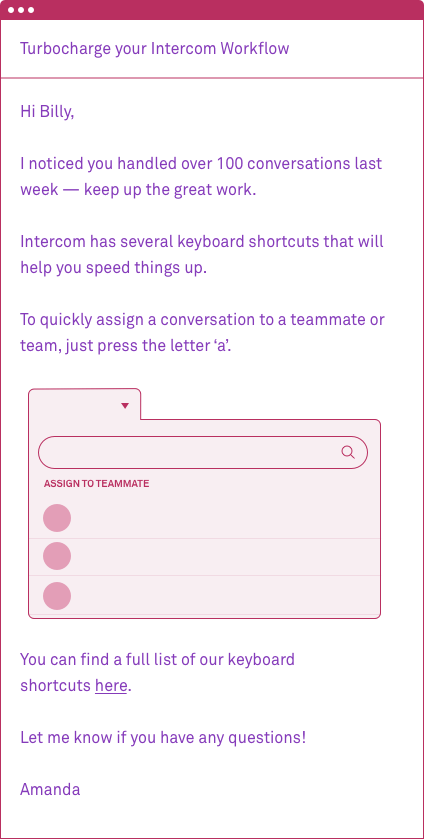
3. Embed your product into their workflow
Facebook. Twitter. Google. Slack. These companies all have one thing in common – they create habits among their users. So how do you create these habits in your own product? If your product has a browser extension, desktop application, or mobile app, promote it via an email or in-app message and make sure it’s easy to add.
By getting new users to integrate your product across multiple platforms, you’re increasing the likelihood your product will become a recurring part of their lives. For example, new Dropbox users who fail to install the mobile application won’t experience the full value of being able to access files anywhere. They will upload fewer files, use less space, and are less likely to pay for more storage.
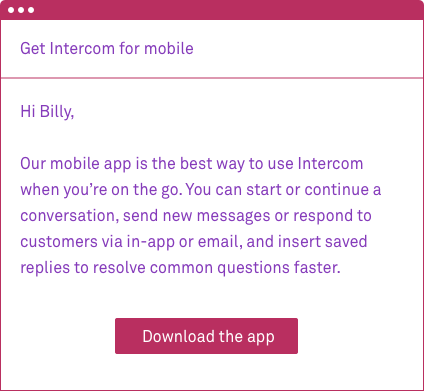
4. Embed your product into their organization
Encouraging new users to build shared connections in your software is one of the best ways to make your product resistant to churn, especially for collaborative, team-based products like Asana, Intercom, and Slack. By embedding your product deep into a company’s workflow, the product becomes an integral piece of how these companies operate and produce results, making it expensive to rip out.
“By making their workflows more seamless and efficient, customers can reduce time spent switching between apps and enjoy effortless productivity”
It’s important to know when to bring other people into the fold. You should only ask new customers to invite colleagues or teammates once they’ve reached a milestone, or indicated they’re sufficiently engaged with your product (e.g. has used a feature X amount of times, has imported custom data, and so on). Making such a heavy “ask” too early in the relationship will likely mean your request will go ignored.
Another way to embed your product into your customer’s organization? Encourage them to integrate your product with the other tools they use every day. By making their workflows more seamless and efficient, customers can reduce time spent switching between apps and enjoy effortless productivity.
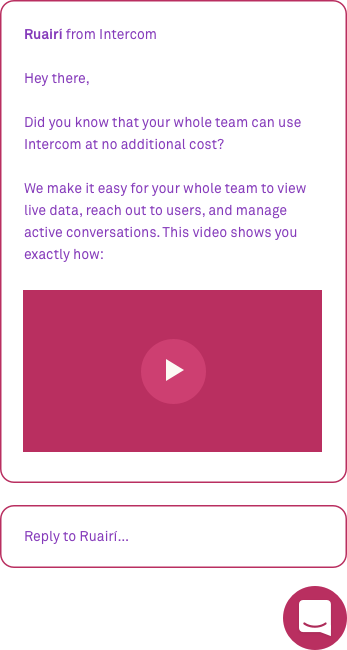
5. Motivate them with new features
Customers don’t forget to use your product, they lose interest in it. So you have to motivate them. By offering churning customers a glimpse of what’s coming down the line, you can excite them about future releases. Things that inspire people to stick around are usually features which save time (such as better importing), increase adoption or efficiency (such as integrations with third parties), or offer additional value for no extra work (such as weekly reports).
“Try tagging feature requests so you can easily target customers with personalized, relevant messages when that feature is released”
The best-performing retention message we’ve seen is an email listing out all the features added in the past 30 days sent to users who have been inactive for the past 30 days. This ensures that it’s always telling people about features they haven’t heard of. More importantly, it follows the key rule of customer communication: don’t tell people to do something, motivate them to do it. Proper motivation is an underrated yet essential customer retention strategy.
Another useful tip? Try tagging feature requests so you can easily target customers with personalized, relevant messages when that feature is released. It’ll show that you’re paying attention to your customer’s needs – and making sure they don’t miss out.
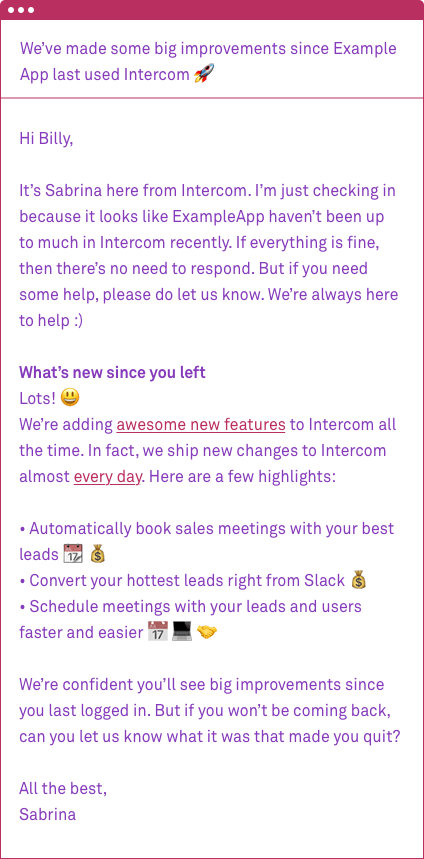
6. Reactivate dormant users
Don’t take inactivity as a sign that people have lost interest forever. There are plenty of distractions from making the most of your product, especially if usage habits weren’t firmly established in those crucial early days.
You can offer one-time deals down the road or wait for a big product or company announcement to try to re-engage people. But even if you’re months away from the next big feature set or don’t have anything new to show off, there’s still valuable material you can offer dormant users, whether that’s educational content like books or a paid survey.
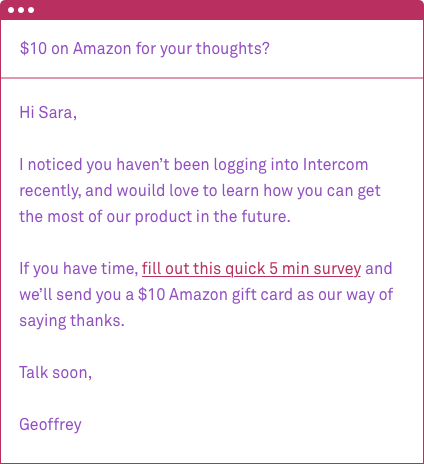
5 best practices for retention messaging
Some efforts are strategic, pertaining to specific tactics. Others are more like values that you can ingrain into your organization to improve customer retention rate and satisfaction across the board.
1. Understand what inactivity looks like for your product
For a communication product like Intercom, we’ll message our users after 30 days of inactivity. But the first thing you should make a call on is what “slipping away” means for your business. For example, seven days of inactivity would be worrying for a daily planner app. Ask yourself, “Does a user of my product need to engage on a daily, weekly, or monthly basis to be considered active?”
Whatever “slipping away” looks like for you, you can set triggers to ensure you’re sending relevant, targeted messages at these crucial moments. These messages can help bring people back to your app or product before it’s too late.
2. Use email early on
At Intercom, we’re all about reaching customers at the right time, at the right moment, and with the right message. But while we firmly believe that in-context messaging is the most effective way to engage your customers, we also know that for new customers, your app probably won’t become a core part of their day-to-day lives overnight.
“When used as part of orchestrated multichannel campaigns, these messages can serve as a jumping off point to get them back to your app or product”
But email is. So if you notice periods of inactivity in those all-important first few days, behavioral emails can act like an extension of your product by relating directly to the actions your customers have taken (or not taken). This means you can reach people with relevant, personally tailored messages that create a consistent, unified customer journey across channels. When used as part of orchestrated multichannel campaigns, these messages can serve as a jumping off point to get them back to your app or product – where you can help them to get more value in real time.
3. Target the right customers
Retention isn’t binary. There is a difference between someone who didn’t convert after a 30-day trial and a year-long user who has started to slip away. A trial user might require more education on the value of your product, while a lapsing user might require a check-in to understand their specific use case (such as sending a survey or scheduling a call with an account manager). Don’t let them both fall into a naive “we miss you” bucket. Treat them differently.
4. Be personal
Retention messages will only work if they’re laser focused in their accuracy. For example, if you’re speaking to a high-value VIP customer who contacted customer support several times already this month, your message will have to reflect that. Don’t email a customer who has several open customer support issues to remind them to login, and don’t begin your mail with “Dear Customer”. These impersonal communications are noticed and slowly add up to diminishing customer loyalty and subpar customer relationships.
5. Be thankful, honest and respectful
Some amount of customer churn is natural. Businesses come and go, as does demand for your product. When a customer does decide to leave, make sure they leave on good terms. If they have legitimate problems with your product, acknowledge them. Thank them for their custom and let them go. The easiest way to screw this up is to continue to spam them months or years after their departure. It does more harm than good.
The bottom line…
If you want to ensure a sustainable, resilient business that can weather the storms of economic uncertainty, then you should be following some of the customer retention strategies and best practices outlined above before it’s too late. Engaging your customers is the most reliable and impactful way to future-proof your business. Just a 1% improvement in churn can make a massive difference to your company’s bottom line.
A focus on customer lifetime value and retention rate might not feel as exciting as the latest growth hacks or the thrilling chase for a shiny new logo, but it’s a much more effective long-term approach. Take retention and customer loyalty seriously and your business – and your customers – will reap the rewards for years to come.






